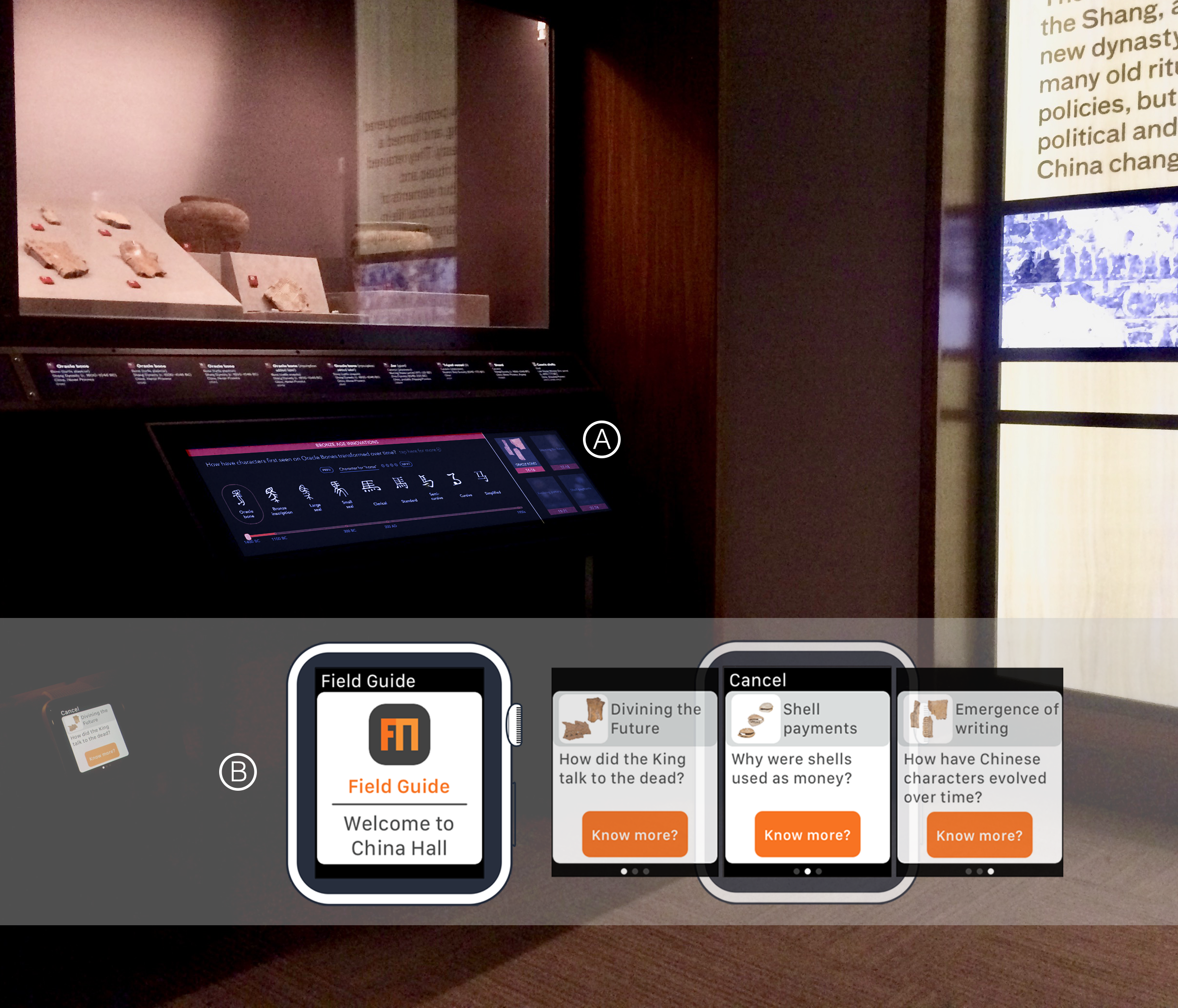I designed and developed an Apple Watch application to let museum visitors navigate galleries of interest more easily, communicate/share data between the watch and a museum's interactive displays for content personalization, and also save snippets of interesting information along the way.

I like to think of it as a wrist computer that nudges me towards things I might like but have missed otherwise, and also serve as a field notebook that "saves" tidbits of information for later.
Here's a video of this system in action:
We (Rovik Robert, Mike Horn) tested this system at Chicago's Field Museum.
Software | iOS, WatchOS app written in SWIFT. I had also written the application running on the Field Museum's interactive displays as a part of another project.
Excerpt from the paper published at CHI'18:
Modern museums cater to visitors with diverse interests while striving to ensure a personalized and memorable experience. Additionally, collections-based institutions such as natural history museums have many cultural artifacts and specimens distributed across expansive spaces, where the popularity of an artifact often correlates with its visual appeal. For example, a large dinosaur fossil might attract more visitors than a chipped earthen pot of historical and cultural significance. To tackle these issues, and to make it easier to appreciate cultural artifacts, museums have long employed guided or electronic tours. More recently, museums have been experimenting with interactive digital displays that serve as proxies for static labels or paragraphs of text.
Coinciding with the proliferation of interactive displays in museums, there has been a large increase in personal computing devices – mainly in the form of smartphones – carried by visitors. Museums are fast evolving into display rich environments that create new challenges and opportunities. Smartphones, though ubiquitous, are often criticized for their disruptive nature in a social context [7, 9]. And while researchers have investigated the efficacy of smartphones working in conjunction with NFC tags or Bluetooth beacons embedded across a museum gallery, the potential of smartwatches has not been explored to the same extent.
In this paper, we focus on the problem of personalizing a museum visit, and explore how smartwatches may fit into a multi-display museum environment. We present the design and evaluation of FieldGuide, an interactive system that pairs a smartwatch worn by a visitor to the museum’s exhibit displays.
Related Publication(s)

